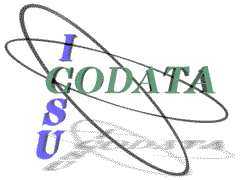Senckenberg Research Institute and Museum, Frankfurt
Botanical Garden and Botanical Museum Berlin-Dahlem
Senckenberg Research Institute and Museum, Frankfurt |
Botanical Garden and Botanical Museum Berlin-Dahlem |
TDWG 2000: Digitising Biological Collections
Taxonomic Databases Working Group, 16th Annual Meeting
Senckenberg Museum, Frankfurt, Germany, November 10-12, 2000
* Zoologisches Forschungsinstitut und Museum Alexander Koenig (ZFMK), Adenauerallee 150-164, D-51113 Bonn, Germany
[Poster presentation and computer demonstration]
Databasing of museum collections is advancing rapidly, and powerful relational databases have been designed for information retrieval. The standard query language SQL facilitates data exchange and compatibility. No such standards exist for Geographical Information Systems (GIS) and multimedia data, which are of increasing relevance for biodiversity information systems. Two examples are presented to illustrate the application possibilities and problems of such hybrid systems:
The 'Global Register of Migratory Species' (GROMS) -database administers animal distribution maps in GIS-format, storing different geometries such as polygons, lines and points for distribution ranges, migration routes or point data, respectively. Point data can easily be stored within the database, but complex geometries such as lines and polygons are stored outside the database (connected by filename and an index of Geo-objects). The database contains further attributes such as bibliographic reference, a time code, area and a bounding box for each geometry. The two systems are connected by a java-based graphical user interface, to publish and visualize interactive maps on the World-wide Web (http://www.groms.de). This interface allows geographic filtering of information, depiction of maps, and generation of simple species reports. Species range states have been calculated by intersection of distribution ranges (polygons) with the geometries of political units. The results have been imported into the database and can be easily retrieved without the performance of complex GIS-operations. This system is compatible with the "Simple Feature specification" of the OpenGIS consortium.
A similar approach is used by the 'German Orthoptera collections database' (DORSA) for managing multimedia files of cricket songs. Acoustic files are analysed and recognised directly by neural networks, while the respective metadata and results are stored within the database. The combined system will be developed towards a "Rapid Assessment Tool", to be used for the assessment of cricket song diversity in the field.
TDWG | Participants | Presentations | Senckenberg Museum | BGBM Biodiversity Informatics
|
This meeting was co-sponsored by the Committee on Data for Science and Technology (CODATA) |
 |
Page editor: W. Berendsohn, wgb@zedat.fu-berlin.de. © BGBM 2000.